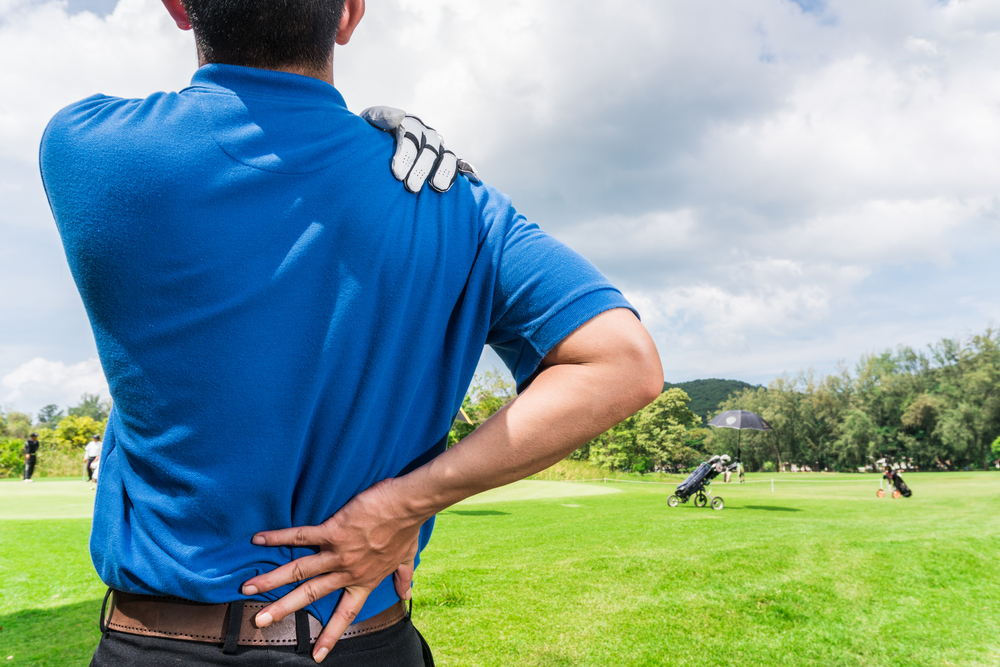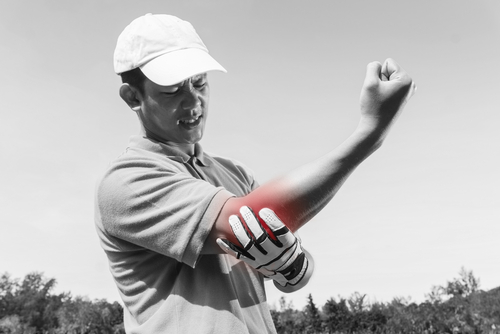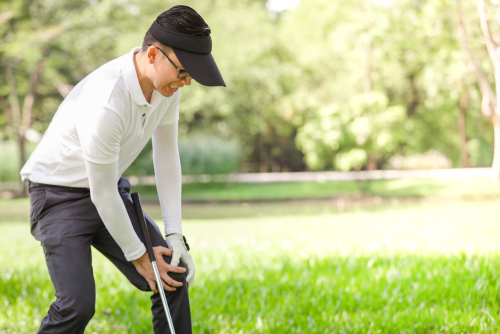
Now that summer is finally almost here, it’s time to start enjoying our favorite outdoor activities again. And for many of us, especially on Long Island, there’s nothing like waking up early to hit the golf course. However, the subsequent pain can really dampen that joy.
While golfing is a great and fun way to stay active, the potential for a sports injury is high. The repetitive motions can have an intense effect on the body, particularly the arms. However, our Long Island orthopedic office can help diagnose and treat this pain. Read on to learn more about common golf injuries, and how you can avoid/treat them.
1. Back Pain
When preparing for a swing, chances are you’re standing in a hunched position. During the swing, rotating the frame of your body (and your arms) creates rotational stress. With enough repetition, this could result in lower back pain, which may eventually reach the rest of the spine.
You can prevent this back pain by refining your form and technique. Additionally, exercising your back muscles through flexibility-focused exercises like yoga will ease back pain. It will also serve well in preventing future back injuries. An orthopedist can help you to adopt a proper form.
Treatment
In the event that back pain becomes unbearable, our qualified Long Island orthopedists can help to eliminate this pain. Based on your individual condition, we can provide physical therapy, epidural steroid injections, as well as non-steroidal anti-inflammatory injections to help relieve back pain.

If these treatments do not sufficiently quell this pain, then arthroscopic surgery may be the answer. This minimally invasive spine surgery will help restore the spine to its original position, and eliminate pain. At Central Orthopedics, our surgeons are skilled and experienced in performing spinal surgery.
2. Injured Rotator Cuff
Golf swings can cause a lot of stress on the shoulders. Starting from a neutral position, players bring the golf club behind the back, hit the ball, and then follow through. All of this motion (which takes place in a short period of time) can take quite a toll on the rotator cuff tissue.
As always, practicing proper golf form will help prevent rotator cuff injuries. Routine exercise will also strengthen these muscles, which will develop more resistance to these injuries. A Long Island orthopedist can recommend muscle-strengthening exercises.
Treatment
Rotator cuff tears that result from these repetitive movements are a common (but treatable) injury. With expert help from a qualified orthopedics specialist, you can overcome this injury.
The first step to this process is generally a physical therapy treatment. This involves light movement, along with heat and ice therapy. Then, the orthopedist will help the patient to perform muscle-strengthening exercises. In severe cases, the orthopedic staff may resort to arthroscopic repair surgery. During this surgery, the surgeon will attach the tendons to the bone with specialized hardware.
3. Golf and Tennis Elbow
A golfer’s term for tendonitis, golf elbow is a common term for inflammation in the inner elbow tendon. Tennis elbow, a related condition that plagues many tennis players, refers to inflammation in the outer tendon of the elbow.
Golfer’s elbow condition is caused by over-reliance on forearm muscles. This includes the muscles that allows players to grip the club, flex your wrist, and rotate the arm. Ironically, tennis elbow is an equally common injury for golfers. This condition is caused by premature release swings.
The best approach to avoiding these injuries is varying your swings. Giving your arms, forearms, and elbows enough time to rest and rebuild tissue is essential. An orthopedic specialist can give golfers advice about practicing frequency.

Treatment
While you should remain physically active in a safe capacity, you shouldn’t continue to play golf while recovering from golf or tennis elbow. The first line of treatment for these injuries is physical therapy, along with ice therapy.
When these treatments do not result in full restoration, our staff may use other tactics, like tendon debridement or release.
4. Knee Pain
Without properly distributing your weight during a swing, you may be setting yourself up for a future injury. Rapidly moving your body from a side-facing position to a front-facing position during a golf swing may cause your knee to experience extra stress/inflammation. This often occurs with the most body-taxing jobs. Standing and walking around can also aggravate existing knee conditions, such as osteoarthritis.
Developing thorough stretching habits prior to golfing will help your knee muscles prepare for this stress.
Treatment
There are a few non-invasive treatments that can aid in reducing knee pain. First, applying ice packs to the knee for short periods of time will reduce inflammation. Wearing a brace may help you to gain the extra support that you need.

When these treatments are insufficient, there are alternative treatments. For example, a specialist can perform an artificial joint replacement surgery. This treatment prevents the bones from rubbing against each other.
Central Orthopedic Group Long Island
At Central Orthopedics, we’re passionate about helping our patients overcome their unique injuries. With our specific approach, we use both restorative techniques and specific surgical tactics to help patients regain full functionality.
